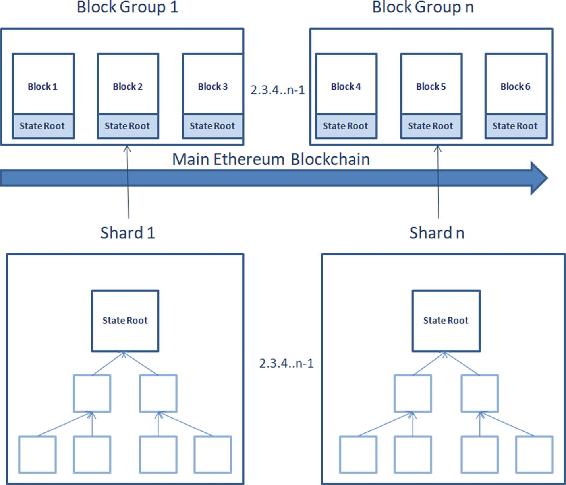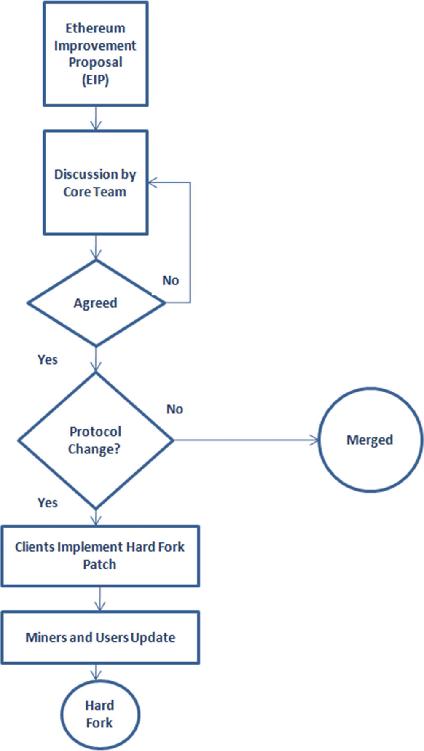10. Ethereum: What Lies Ahead
I generally support just about every secession attempt that comes along. If in the future there is that kind of a dispute in Ethereum, Id definitely be quite happy to see Ethereum A go in one direction and Ethereum B go the other.
Vitalik Buterin
In the past decade, many blockchain and DLT frameworks have flooded the market, but Ethereum is still the favorite of most blockchain lovers. As per a recent report, Ethereum currently has the most active developer community in the space and has 30 times more developers than the second most active community. The Ethereum blockchain does have some issues, yet its the market leader in its space, and no other framework is anywhere even close to this framework.
One of the major reasons is because Ethereum has consistently tried to get rid of its loopholes and reinvent itself through new features and versions. Lets discuss them.
The Evolution of Ethereum
Here are some of the major releases of Ethereum and their features.
Olympic, May 2015
Also known as version 0.9, Olympic was the first release of Ethereum on the testnet; however, it is now deprecated.
Frontier, July 2015
The official 1.0 release of Ethereum was launched as a public main network. It allowed developers to experiment, mine ether, and begin building Dapps and tools.
Homestead, March 2016
Launched on Pi Day, Homestead was the first production release of Ethereum. It brought many protocol improvements that laid the foundation for future upgrades and for speeding up transactions.
Byzantium Metropolis Phase I, October 2017
This is where we currently are on the Byzantium phase of Ethereums road map; its the first part of the Metropolis stage that aims to introduce various privacy and functionality improvements.
Constantinople Metropolis Phase II, Slated for 2018
The main features of this second phase of the Metropolis release will be to smooth out all the issues that may come up in Byzantium and, more importantly, to introduce the proof-of-stake and proof-of-work hybrid chain.
Serenity, Slated for 2018
With this release, Ethereum will completely move from consensus through proof-of-work and proof-of-stake by using a new proof-of-stake model called Casper introduced in Metropolis Constantinople; however, in this release, it will be completely functional.
Scaling of Ethereum
In May 2018, the transaction throughput in Ethereum public blockchain mainnet reached 1 million transactions per day. With the ICO craze taking the market by storm, there is a huge load on the Ethereum network. The scalability of the Ethereum network has been a major concern for its key stakeholders; it needs to support higher future demands if its usage keeps increasing exponentially the way it has been in the past couple of years. Increasing gas costs are also a factor that needs attention.
The major projects that have come forward to solve the scaling and cost issues are the following:
Casper proof of stake
Sharding
Raiden network
Plasma
Internet of blockchains
Casper Proof of Stake
Casper is Ethereums upcoming proof-of-stake (PoS) consensus protocol that I have already discussed. With Casper, the gas fees are expected to go down dramatically, which is a relief for transaction initiators.
Sharding
In Chapter , I mentioned how each node on the Ethereum network stores all the states, contract codes, account balances, and so on, and processes the transactions. Currently, this all happens across the network without any parallel processing, which is a killer for scalability and throughput. This issue has raised the following question for the core Ethereum development teams: how we can run this entire ecosystem in a parallel multitasking mode?
Figure showcases the working model of sharding. Sharding is a new concept where instead of all nodes verifying the transactions, only a few of them take ownership of mining a portion of the transactions. With this divide-and-conquer logic, the scalability and number of transactions could increase manifolds, attracting more and more big players to embrace Ethereum to replace their existing centralized businesses.
Figure 10-1
Sharding in Ethereum
With sharding , new shard chains will be added to the main Ethereum blockchain network. Hence, there will be no need for miners to download and compute every transaction in the history of the blockchain to validate a new transaction.
Raiden Network
Similar to Bitcoins Lightening Network , two parties on the blockchain can create side channels and transact with each others posts, and the transaction is recorded in the main Ethereum blockchain network. The parties pay some tokens to the network for their mutually agreed on transaction. By this means, even micro and nano transactions can be executed on the network .
Plasma
Like sharding, plasma is another mechanism of creating side chains for achieving scalability where again you do not need to download the entire network to validate the transactions. Its still under development.
According to Vitalik Buterin, plasma allows you to have what the Bitcoin people promised in 2013: private chains anchored into a public chain. specifically, if you have one plasma coin in the plasma chain and if the plasma chain is hacked, then you can use that to recover one coin on the public chain. Therefore, coins on the plasma chain are equal to coins on the public chain without transactions taking up space on the public chain.
Plasma uses a proof-of-authority model where instead of downloading the entire blockchain history, users will be able to instead generate plasma coins by sending a deposit to the contract. This ideally will solve both the scalability and gas cost issues.
Internet of Blockchains: Polkadot, Cosmos, Coco
Because the blockchain is already entering the mainstream, there is a huge demand for different blockchain frameworks to be capable of interacting with each other without hindrances. Polkadot , Cosmos , and Coco are projects working in this area, and they will likely hit production in 2018 or 2019, opening the doors to a golden age of data communication in a decentralized way.
Governance
Vitalik Buterin, who cofounded the Ethereum framework, is still actively involved in its development. However, like most open source software applications, Ethereum is also governed by a group of stakeholders .
Developers like us who develop Dapps with Ethereum
Users who run Dapps and execute transactions on them
Miners who validate those transactions
Figure shows how any change to the Ethereum framework is introduced and finally implemented.
Figure 10-2
Governance of the Ethereum framework
Any changes to the existing framework may be raised by anyone as an Ethereum improvement proposal (EIP) . Figure demonstrates the journey of proposals until they reach the implementation stage. Many of the EIPs I have already discussed in previous chapters are waiting for approval or the final state. The core Ethereum development team, along with many stakeholders, organizes regular discussions to figure out the future development of the framework .

![Debajani Mohanty [Debajani Mohanty] Ethereum for Architects and Developers: With Case Studies and Code Samples in Solidity](/uploads/posts/book/119695/thumbs/debajani-mohanty-debajani-mohanty-ethereum-for.jpg)


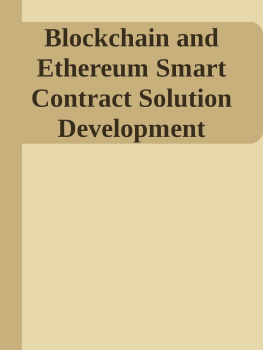
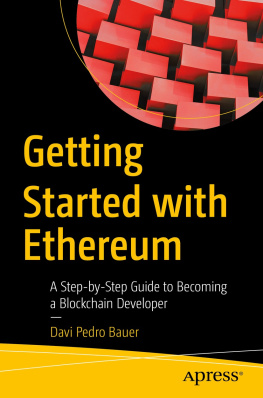
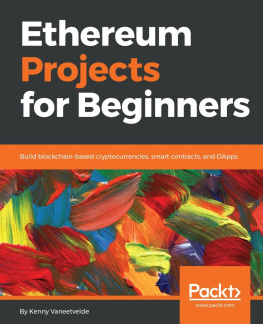
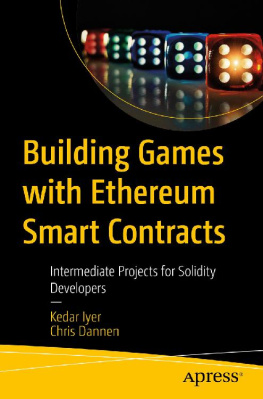
![Chris Dannen [Chris Dannen] - Introducing Ethereum and Solidity: Foundations of Cryptocurrency and Blockchain Programming for Beginners](/uploads/posts/book/119690/thumbs/chris-dannen-chris-dannen-introducing-ethereum.jpg)
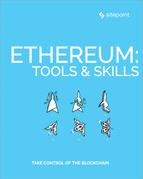
![Kenny Vaneetvelde [Kenny Vaneetvelde] - Ethereum Projects for Beginners](/uploads/posts/book/119688/thumbs/kenny-vaneetvelde-kenny-vaneetvelde-ethereum.jpg)
![Fatima Castiglione Maldonado [Fatima Castiglione Maldonado] - Introduction to Blockchain and Ethereum](/uploads/posts/book/119687/thumbs/fatima-castiglione-maldonado-fatima-castiglione.jpg)
